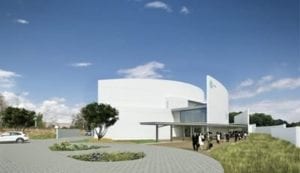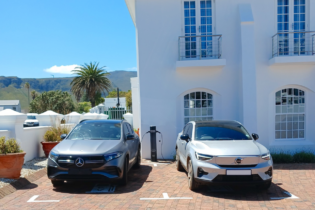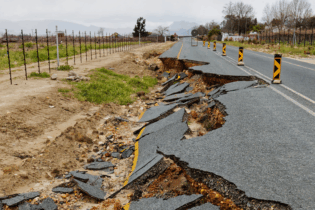New system will increase operational capacity, provide a higher level of flexibility and safety, and reduce train delays.
Siemens, under the leadership of the Passenger Rail Agency of South Africa (PRASA), is busy with execution of the Gauteng Signalling Project, one of the biggest railway signaling projects ever executed in South Africa. This involves the upgrade of aging signaling infrastructure in the region to a modern, safe and reliable system. The project includes the upgrade to electronic interlocking, installation of new signal equipment, changing of the points machines and the introduction of reliable, safe track detection axle counters. The Siemens equipment has been tested in the South African environment under strict and controlled safety rules over the past years. An iconic control centre, known as the Gauteng Nerve Centre (GNC) will be built in Kaalfontein to house the modern monitoring and control systems under one roof. This centre will form the base for key personnel from PRASA to conduct daily operational duties. “Over the past few months, Siemens has diligently setup project structures, key processes and started with system design and procurement activities in close collaboration with PRASA and the transaction advisors”, says Kevin Pillay, VP of Infrastructure & Cities for Siemens Africa.Key highlights of the project include:
- Together with the local councils and PRASA, Siemens has concluded the land consolidation and environmental approval for the GNC. As a next step, the relevant stakeholders are ready for the soil breaking and mobilisation of the construction teams.
- The core of the interlocking (safety system) revolves around the software which has been localised to the South African rail requirements after several engagements with PRASA and Siemens experts. The core software is currently being tested by Siemens and will be released in the next week for validation by PRASA technical experts. Mr. Pillay explains that this is an intense process of thorough engineering validation conducted by the PRASA approval team to ensure that the end product is safe and in line with South African rail rules.
- In parallel, Siemens has setup several key project processes and structures that ensure the project will run in line with international best practices. As an example, each station needs a comprehensive set of drawings and electronic circuitry detailing the full works that will be performed. These documents are sent through several independent approvers (checkers) who once again ensure that the outcome is safe and reliable for installation. Only once these are approved, will the actual installation work commence. Several station plans are currently in the approval line. Siemens has already started work at various sites where the approval processes allow.
- To accelerate the site works, Siemens is assembling the equipment in parallel using local labour. The extent of site works must not be underestimated. In addition to the trenching and physical cable laying, Siemens must ensure that the equipment is vandal proof, maintenance friendly and can perform under South African environmental conditions. Siemens’ vast experience in the South African market makes it easier to adhere to the country’s health, safety and environment requirements.
- To date, Siemens has employed more than 25 personnel for various posts within the initial startup of the project. In addition, the company has issued various bursaries to students studying towards qualifications in this field of engineering. Siemens also sponsors technical artisan training colleges and other initiatives to support local skills development.
- Siemens recently relocated its rail operations to bigger premises in Northriding, Johannesburg. This has created the ideal base to drive Siemens’ localisation concept, which not only includes manufacture and assembly of hardware but also in localising the company’s engineering capability for software configuration, design and testing. These tasks are executed by local engineers who are trained to use modernized engineering tools and world class processes.
- Siemens has built a strong back office in terms of project management, quality, documentation, engineering and other project functions that are easily neglected in most projects.
- Lastly, the procurement plans are being executed. Siemens has received most of its equipment and is ready to roll it out.








